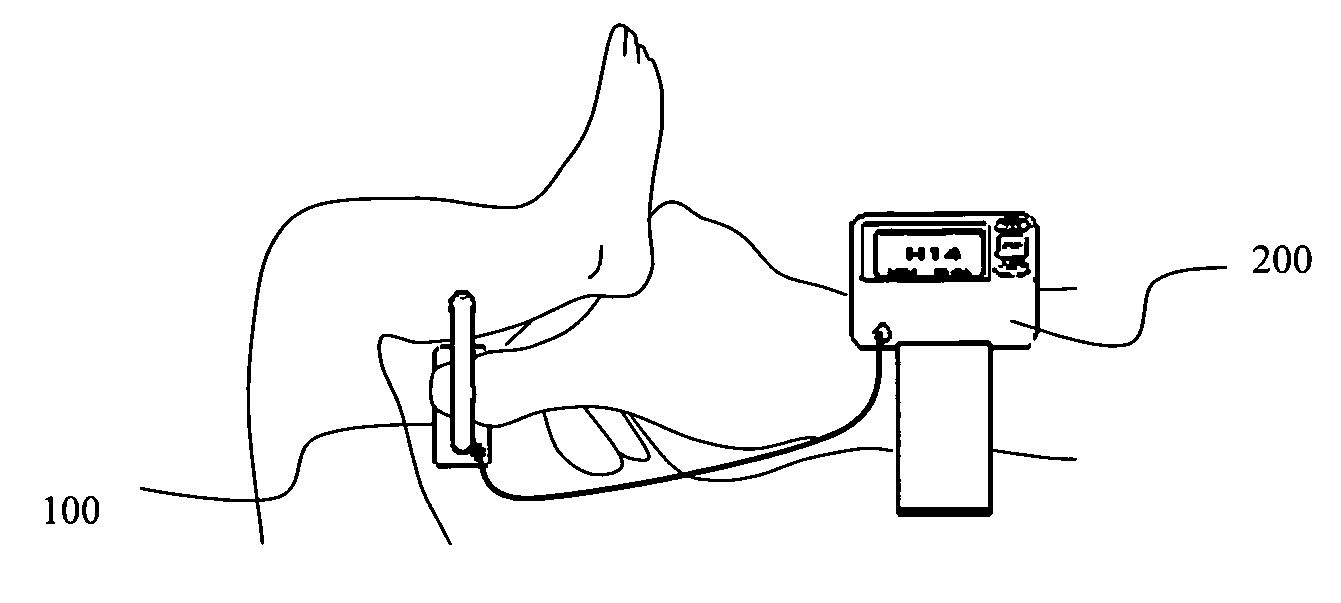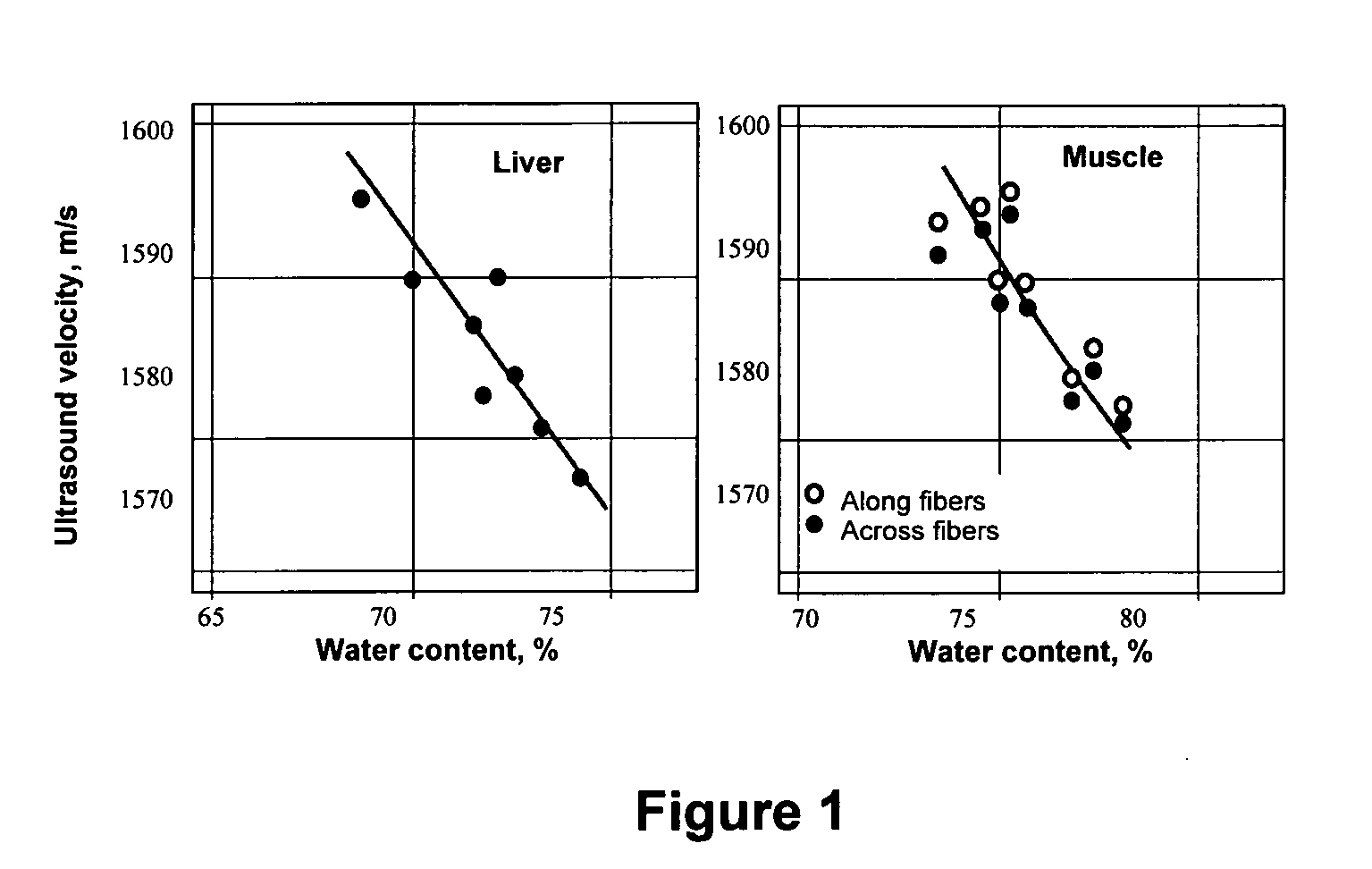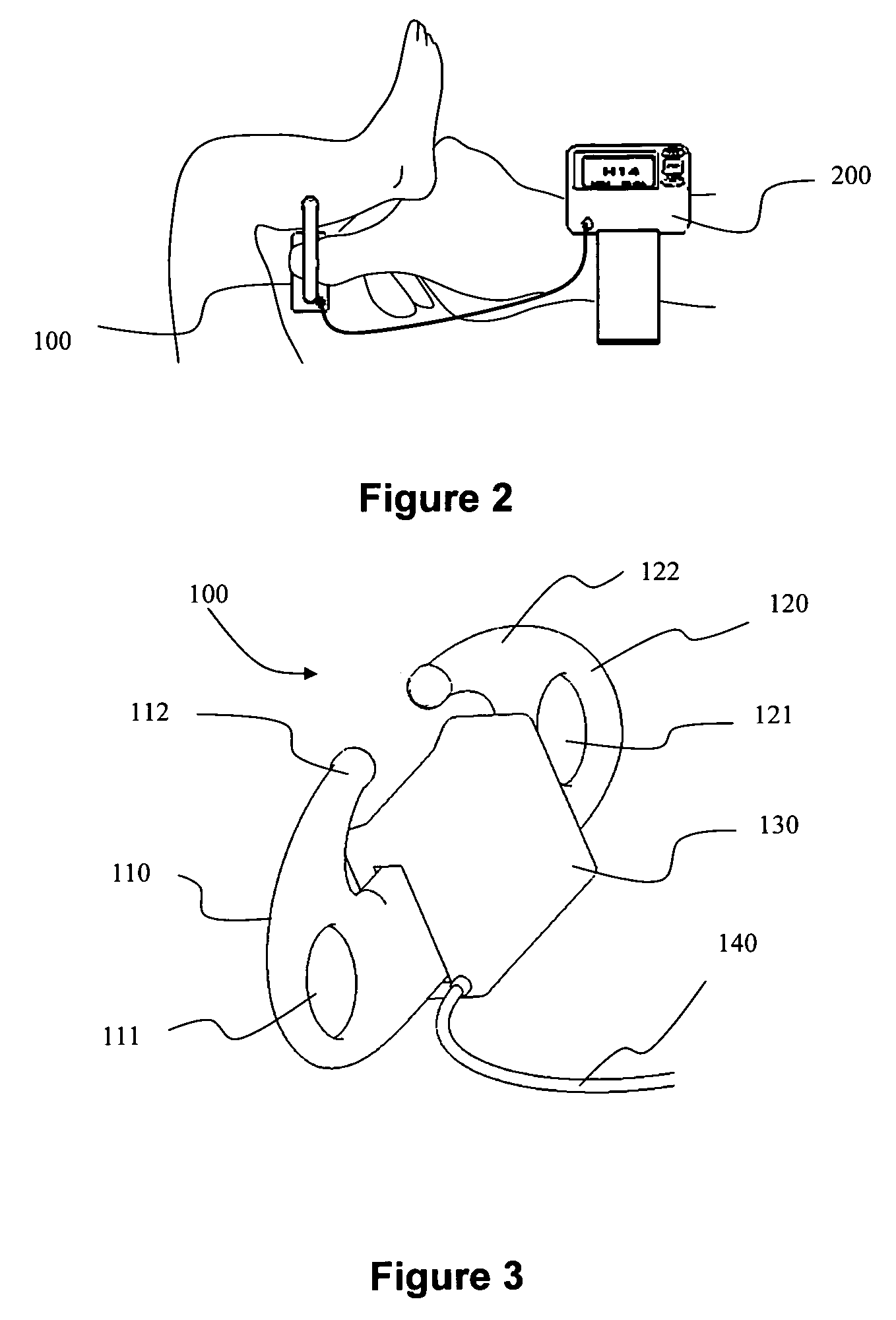Infant hydration monitor
a monitor and infant technology, applied in the field of ultrasonic measurement of biological tissue parameters, can solve the problems of non-invasive, non-diagnostic, and difficult to assess the hydration status of sick infants on the bedside, and achieve the effect of quick determination of infant hydration status
- Summary
- Abstract
- Description
- Claims
- Application Information
AI Technical Summary
Benefits of technology
Problems solved by technology
Method used
Image
Examples
Embodiment Construction
[0036]The dehydration assessment according to present invention is based on measurement of ultrasound velocity in tissue, which is defined by the molecular composition of tissue and to a good approximation, is a linear function of the water content. In several publications [Gorelov S E, Lyrchikov A G, Sarvazyan A P. Ultrasound velocity in mammalian liver as a function of water content in tissue. Acoustical Journal, 1981, 33, N. 2, 358-360; Sarvazyan A P, Lyrchikov A G, Gorelov S E. Dependence of ultrasonic velocity in rabbit liver on water content and structure of the tissue. Ultrasonics. 1987 July; 25(4):244-247] incorporated herein by reference it was shown that the ultrasound velocity in soft biological tissues changes as a rate of about 3-4 m / s per 1% change of water content. It is also generally known that an easily achievable accuracy of general ultrasound velocity measurements is about 1 m / s. This suggests that a highly accurate detection of less than 1% of water content is p...
PUM
 Login to View More
Login to View More Abstract
Description
Claims
Application Information
 Login to View More
Login to View More - R&D
- Intellectual Property
- Life Sciences
- Materials
- Tech Scout
- Unparalleled Data Quality
- Higher Quality Content
- 60% Fewer Hallucinations
Browse by: Latest US Patents, China's latest patents, Technical Efficacy Thesaurus, Application Domain, Technology Topic, Popular Technical Reports.
© 2025 PatSnap. All rights reserved.Legal|Privacy policy|Modern Slavery Act Transparency Statement|Sitemap|About US| Contact US: help@patsnap.com



